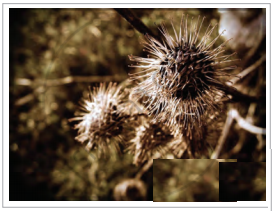Advertisements
Chapters
2: A Snake Charmer’s Story
3: From Tasting to Digesting
4: Mangoes Round the Year
▶ 5: Seeds and Seeds
6: Every Drop Counts
7: Experiments with Water
8: A Treat for Mosquitoes
9: Up You Go!
10: Walls Tell Stories
11: Sunita in Space
12: What if it Finishes ...?
13: A Shelter so High!
14: When the Earth Shook!
15: Blow Hot, Blow Cold
16: Who will do this Work?
17: Across the Wall
18: No Place for Us?
19: A Seed tells a Farmer’s Story
20: Whose Forests?
21: Like Father, Like Daughter
22: On the Move Again
![NCERT solutions for Environmental Studies - Looking Around [English] Class 5 chapter 5 - Seeds and Seeds NCERT solutions for Environmental Studies - Looking Around [English] Class 5 chapter 5 - Seeds and Seeds - Shaalaa.com](/images/environmental-studies-looking-around-english-class-5_6:71bdf81a5f57474cb6fe25f9506ae503.jpg)
Advertisements
Solutions for Chapter 5: Seeds and Seeds
Below listed, you can find solutions for Chapter 5 of CBSE NCERT for Environmental Studies - Looking Around [English] Class 5.
NCERT solutions for Environmental Studies - Looking Around [English] Class 5 5 Seeds and Seeds Seeds and Seeds [Pages 42 - 50]
Discuss
What things are soaked before cooking in your house? Why?
What things do you eat after sprouting? How are they sprouted? How much time does it take?
Has the doctor or someone you know ever told you to eat sprouts? Why?
Do this and find out
Do you remember that in Class IV you did an activity with seeds? Now try another one.
- Take some chana and three bowls.
- Put five chana in the first bowl and fill it up with water.
- Put a damp piece of cloth or some cotton wool in the second bowl. Now keep the same number of chanas in it. Make sure that the cotton wool or cloth remains wet.
- Put the same number of chanas in the third bowl. Do not put anything else in it. Cover all three bowls.
Observe after two days and note the changes in the bowls.
| Bowl 1 | Bowl 2 | Bowl 3 | |
| Are the seeds getting air? | No | Yes | Yes |
| Are the seeds getting water? | |||
| What changes did you see? | |||
| Have the seeds sprouted? |
Tell and write
In which bowl did the seeds sprout? What difference did you see between this bowl and the other bowls?
Why did Gopal’s mother tie the chana in a damp cloth?
When you split the whole masoor, you get me - masoor dal. But then you cannot sprout me! Can you think why?
Draw
Look carefully at your sprouted chana and make its drawing?
Project
Plant your seeds
Take a clay pot or a tin can with a wide mouth. Make a small hole at the bottom of the can. Fill your can with soil. Put four or five seeds of the same kind in the soil and press them gently. Different groups can plant different kinds of seeds, such as mustard (sarson), fenugreek (methi), sesame (til) or coriander (dhania).
Write
Name of the seed: ______
The date on which you planted them: ______
The day you observe something coming out of the soil, start filling the table:
| Date | Height of the plant (in cm) | Number of seen leaves | Any other change |
To find the height of a plant use thread and then measure it on the scale.
Find out
How long did it take for the plant to come out from the soil?
What was the difference in the height of the plant on the first and second day?
On which day did the height of the plant increase the most?
Did new leaves come out of the plant every day?
Was there any change in the stem of the plant?
Discuss
Which seeds took the most number of days for the stem to come out of the soil?
Which seeds took the least days to come out of the soil?
Which seeds did not grow at all? Why?
Did anyone’s plant dry up or turn yellow? Why did this happen?
What would happen if the plants do not get water?
Straight from your heart
What is inside the seed?
How does a big plant grow from a tiny seed?
Think and imagine
What would happen if plants could walk? Draw a picture.
Find out
Do some plants grow without seeds?
So many seeds!
How many types of seeds can you collect? Where will you find them? Each of you should try to collect as many different types of seeds as you can. After that, put all the seed collections together. Now observe these seeds carefully – their shapes, sizes, colours, textures (smooth or rough). Make a seed chart to put up in the class. You can start with a table like this.

Think
Did you keep aniseed (saunf) and cumin (jeera) on your list?
Which was the smallest seed and which was the biggest seed in your collection?
Make lists of :
Seeds that are used as spices in your home.
Make lists of :
Seeds of vegetables.
Make lists of :
Seeds of fruits.
Make lists of :
Light seeds (check by blowing them).
Make lists of :
Seeds that are flat.
Make lists of :
Make more groups. How many groups of seeds did you make?
Make lists of :
Do you know any games that you can play with seeds? Discuss with your friends.
Wandering seeds
Plants cannot move around. Once they grow, they remain in the same place. But their seeds are great travellers! They can reach far and wide. Look at the picture and see the flying seeds.

- Have you ever seen any seed that can fly?
- What is it called in your area?
- Look at your seed collection. Guess how many of those could have travelled by flying.
Wandering seeds
Look at the picture. This seed cannot fly, but it can still travel by sticking to the fur of animals or on our clothes. In this way, it gets a free ride!

Did you get any new ideas from these seeds?
Look at the pictures given below and guess how the seeds travel and reach different places.



Some plants spread their seeds over long distances. When the soybean pods are ripe, they burst and the seeds are thrown out. Have you ever heard their sound?
Think what would happen, if seeds did not spread and remained at one place only.
Make a list of the different ways by which seeds are spread.
Who came from where?
What all was grown in India long ago? Were mangoes and bananas grown here? What came from other countries? Imagine food without potatoes or tomatoes!
What we have learnt
Reena has drawn this picture of the seed sprouted by her. What do you think the seeds need for sprouting? Write in your own words. How would Reena’s seeds look if they did not get the things needed? Show by drawing a picture.

How do seeds spread to far-off places? Write in your own words.
Solutions for 5: Seeds and Seeds
![NCERT solutions for Environmental Studies - Looking Around [English] Class 5 chapter 5 - Seeds and Seeds NCERT solutions for Environmental Studies - Looking Around [English] Class 5 chapter 5 - Seeds and Seeds - Shaalaa.com](/images/environmental-studies-looking-around-english-class-5_6:71bdf81a5f57474cb6fe25f9506ae503.jpg)
NCERT solutions for Environmental Studies - Looking Around [English] Class 5 chapter 5 - Seeds and Seeds
Shaalaa.com has the CBSE Mathematics Environmental Studies - Looking Around [English] Class 5 CBSE solutions in a manner that help students grasp basic concepts better and faster. The detailed, step-by-step solutions will help you understand the concepts better and clarify any confusion. NCERT solutions for Mathematics Environmental Studies - Looking Around [English] Class 5 CBSE 5 (Seeds and Seeds) include all questions with answers and detailed explanations. This will clear students' doubts about questions and improve their application skills while preparing for board exams.
Further, we at Shaalaa.com provide such solutions so students can prepare for written exams. NCERT textbook solutions can be a core help for self-study and provide excellent self-help guidance for students.
Concepts covered in Environmental Studies - Looking Around [English] Class 5 chapter 5 Seeds and Seeds are Seeds and Seeds.
Using NCERT Environmental Studies - Looking Around [English] Class 5 solutions Seeds and Seeds exercise by students is an easy way to prepare for the exams, as they involve solutions arranged chapter-wise and also page-wise. The questions involved in NCERT Solutions are essential questions that can be asked in the final exam. Maximum CBSE Environmental Studies - Looking Around [English] Class 5 students prefer NCERT Textbook Solutions to score more in exams.
Get the free view of Chapter 5, Seeds and Seeds Environmental Studies - Looking Around [English] Class 5 additional questions for Mathematics Environmental Studies - Looking Around [English] Class 5 CBSE, and you can use Shaalaa.com to keep it handy for your exam preparation.
